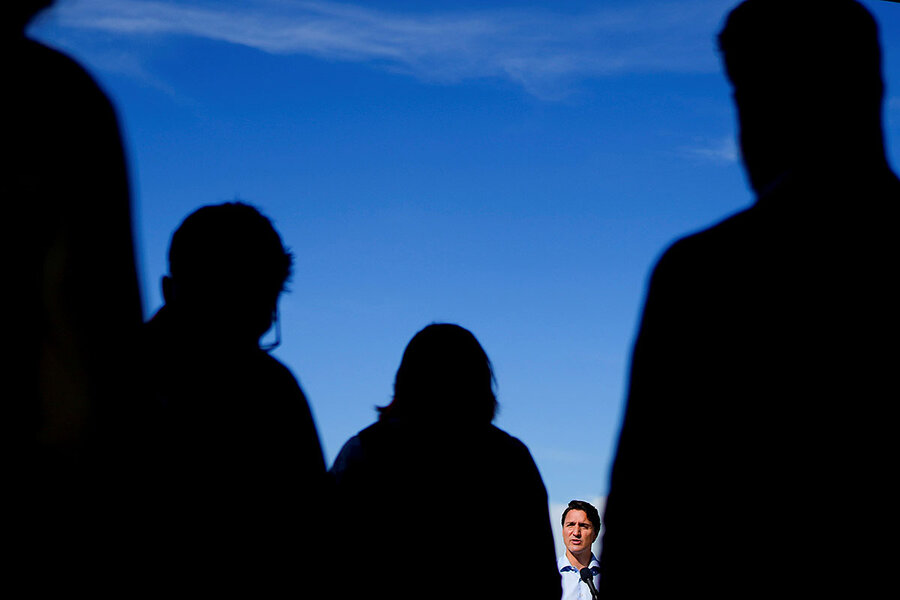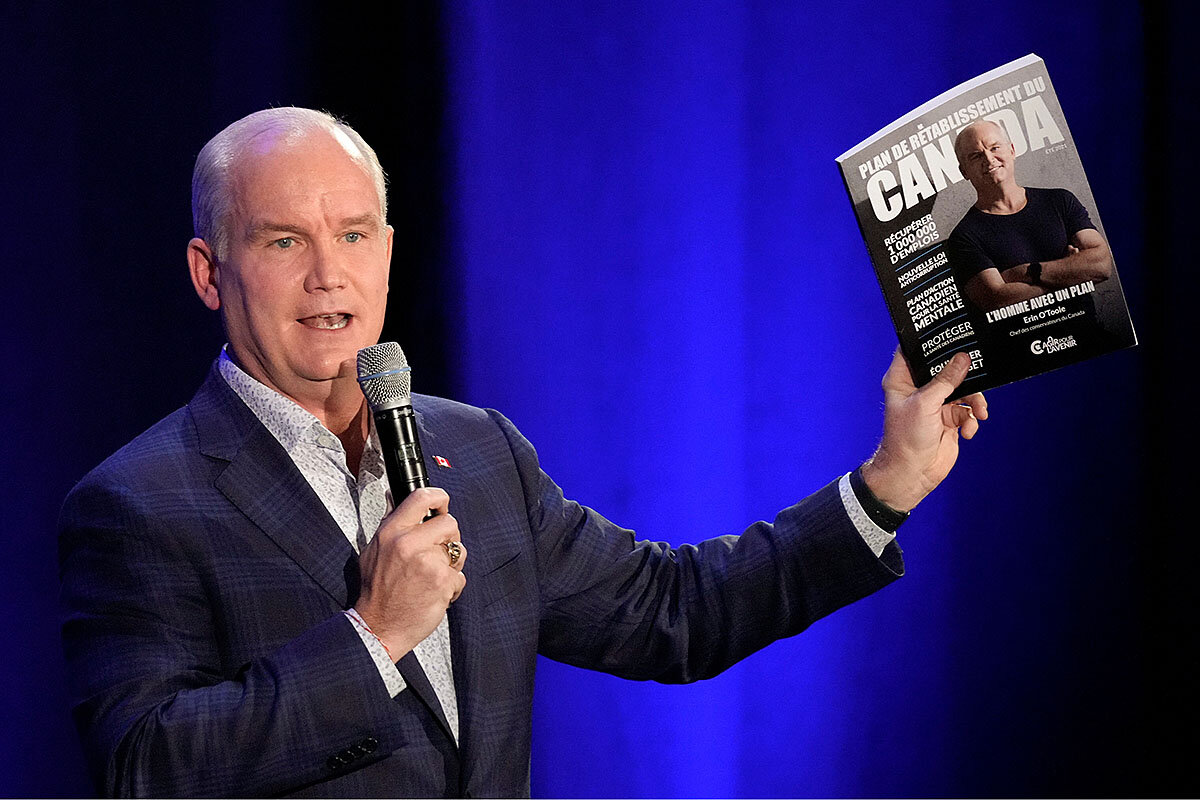Why Canadian elections aren’t following the polarized US example
Loading...
| Toronto
Ever since Canadian Prime Minister Justin Trudeau called snap elections for Sept. 20, he has been dogged on the trail by enraged protesters. Most of the time, they have just hurled threats and insults at the prime minister – primarily over his vaccine mandates. But at an event in London, Ontario, one person identified as a local organizer for the People’s Party of Canada – a right-wing party that didn’t even get 2% in the last election but is now polling around 6% – hurled gravel, too.
For some Canadians, it’s a sign that American-style political polarization is creeping north of the border.
But political analysts say that perspective misses the forest for some particularly rancorous trees.
Why We Wrote This
Canadians have watched concernedly as political polarization has divided the United States. But centrism appears to be winning the day in Canada’s national elections.
In debate and platform, they say, this race has been one of the least contentious in recent history. As conservatives in the United States and several European countries have moved further right to capture votes, over everything from immigration to pandemic response, in Canada the Conservatives have tracked to the center. And the mainstream parties have remained united in the country’s biggest challenge: getting ahead of the fourth wave of COVID-19.
“Everybody in politics right now will tell you that the tone has become nastier and coarser,” says Maxwell Cameron, a political science professor at the University of British Columbia. “I think one of the things that’s most interesting about this election is that it’s not really a particularly polarized election across a wide range of issues.”
And so this campaign has, in one way, offered a counternarrative to the idea that the hollowing out of the middle has led parties to move to the margins in order to mobilize a polarized electorate.
Most of this is explained by the political strategy of Conservative candidate Erin O’Toole. He has staked a place further center than his predecessors, former party leader Andrew Scheer and former Prime Minister Stephen Harper, whose vow in 2015 to ban the niqab headscarf worn by some Muslim women became a flashpoint of identity politics.
In the context of massive government spending to support workers during the pandemic, Mr. O’Toole appears less hawkish on debt. And on social issues he has presented his as a party of inclusion. He says he is firmly in favor of abortion rights, unlike Mr. Scheer, whom Mr. Trudeau defeated in 2019. “We’re not your dad’s Conservative Party anymore,” he said this week.
Critics worry that it’s an electoral ploy and that a Conservative government would be lax on public health measures and guns. But the strategy to capture moderates reflects the electorate, says Christopher Cochrane, associate political science professor at the University of Toronto Scarborough. “The Conservative Party had been moving to the right of the Canadian public,” he says. Mr. O’Toole today returns the party to “an older conservative tradition in Canada that I think a lot of people thought, and maybe rightly, was effectively dead.”
This move to the center could cost the race for Mr. Trudeau, who himself has become a global face of centrism at a time when far-right movements have grown around the world.
The Liberals and Conservatives are neck and neck – at 31.9% and and 30.4% respectively, according to Nanos Research’s nightly tracking data for CTV News and The Globe and Mail.
It’s a much tighter race than the Liberals foresaw when they called it in mid-August, after only two years in office, hoping to turn a minority government into a majority. The challenges of a pandemic fourth wave became clear almost immediately afterward.
Now voters like Safiya Ali, who lives in Greater Toronto, are calling out a double standard. The public was asked to miss weddings and funerals but is now being called to the polls. Ms. Ali has always voted Liberal; now she’s not sure she’ll vote. “I don’t think the election should have been called,” she says.
Canada, until now, had not been riven by the pandemic, which has also kept polarization at bay. All five leaders of the major parties recorded a message together, urging Canadians to get vaccinated, ahead of their only English-language debate.
But the race has revealed a growing risk to that unity. For starters, it has given a bounce to the People’s Party of Canada, which has turned into a vaccine-skeptic party attractive to voters like Jamie Schmelzle. She drives a streetcar in Toronto and says job creation is her No. 1 concern. She has voted Liberal her whole life, but now she is thinking about casting for the People’s Party because she is against vaccine mandates. “They believe in freedom of choice, which is what Canada’s based on,” she says.
Daniel Béland, director of the McGill Institute for the Study of Canada in Quebec, sees two risks of polarization ahead. If Mr. O’Toole loses with a moderate message, the party could lurch right again. “And as the Conservative Party is moving towards the center, there will be some people who are disenfranchised, who don’t accept this more centrist approach.” They could move to the People’s Party.
For now, the mainstream parties have condemned the protesters badgering Mr. Trudeau – as well as anti-vaccine protests that have targeted hospitals in recent days – instead of chasing their vote.
“One way in which Canada differs from other countries is that there’s still a strong centrist anchor in our political parties,” says Jaskaran Sandhu, a political strategist in Brampton, Ontario.
But he says polarized sentiment in the rise of the People’s Party needs to be confronted squarely, not brushed under the carpet in a bid to keep politics cordial. “While it may be a fringe, it’s incredibly problematic. It can’t just be dismissed or ignored, which is how Canada tends to deal with a lot of these issues. There’s a need for a deeper understanding that these sentiments exist.”







